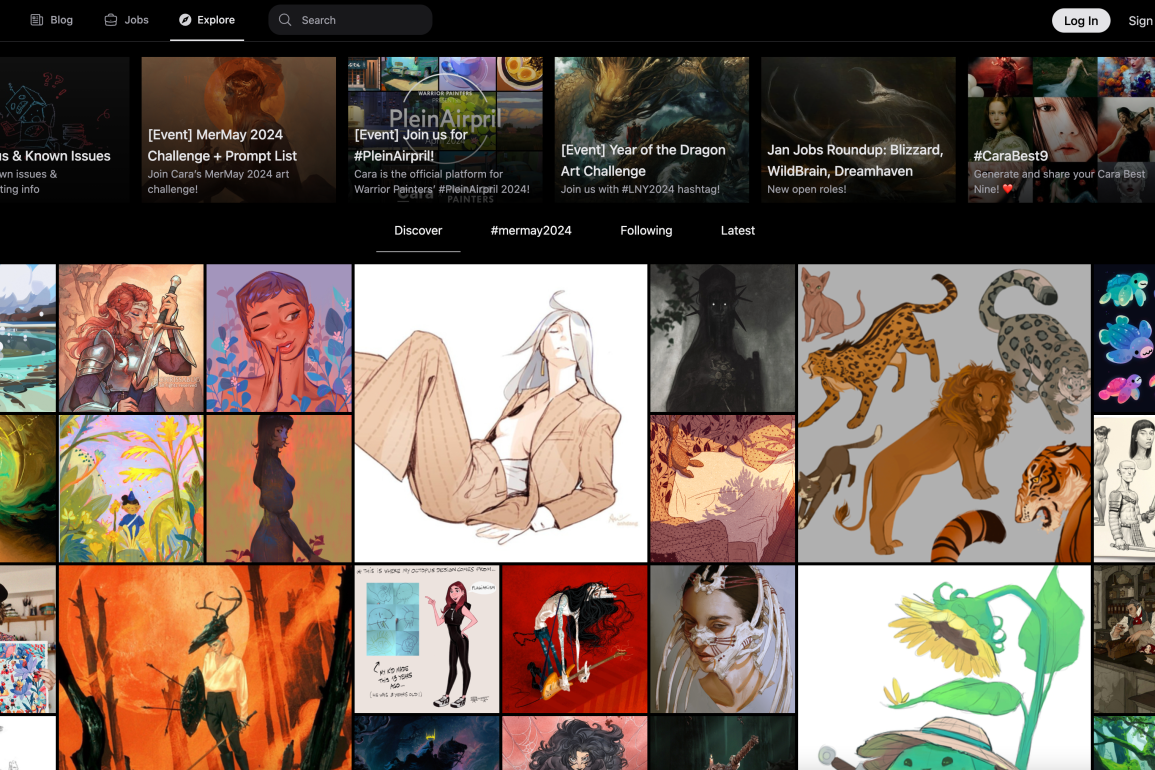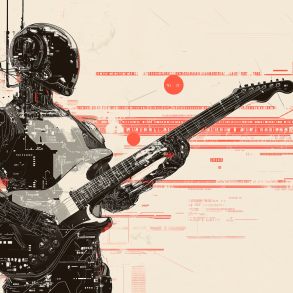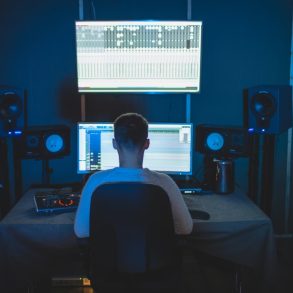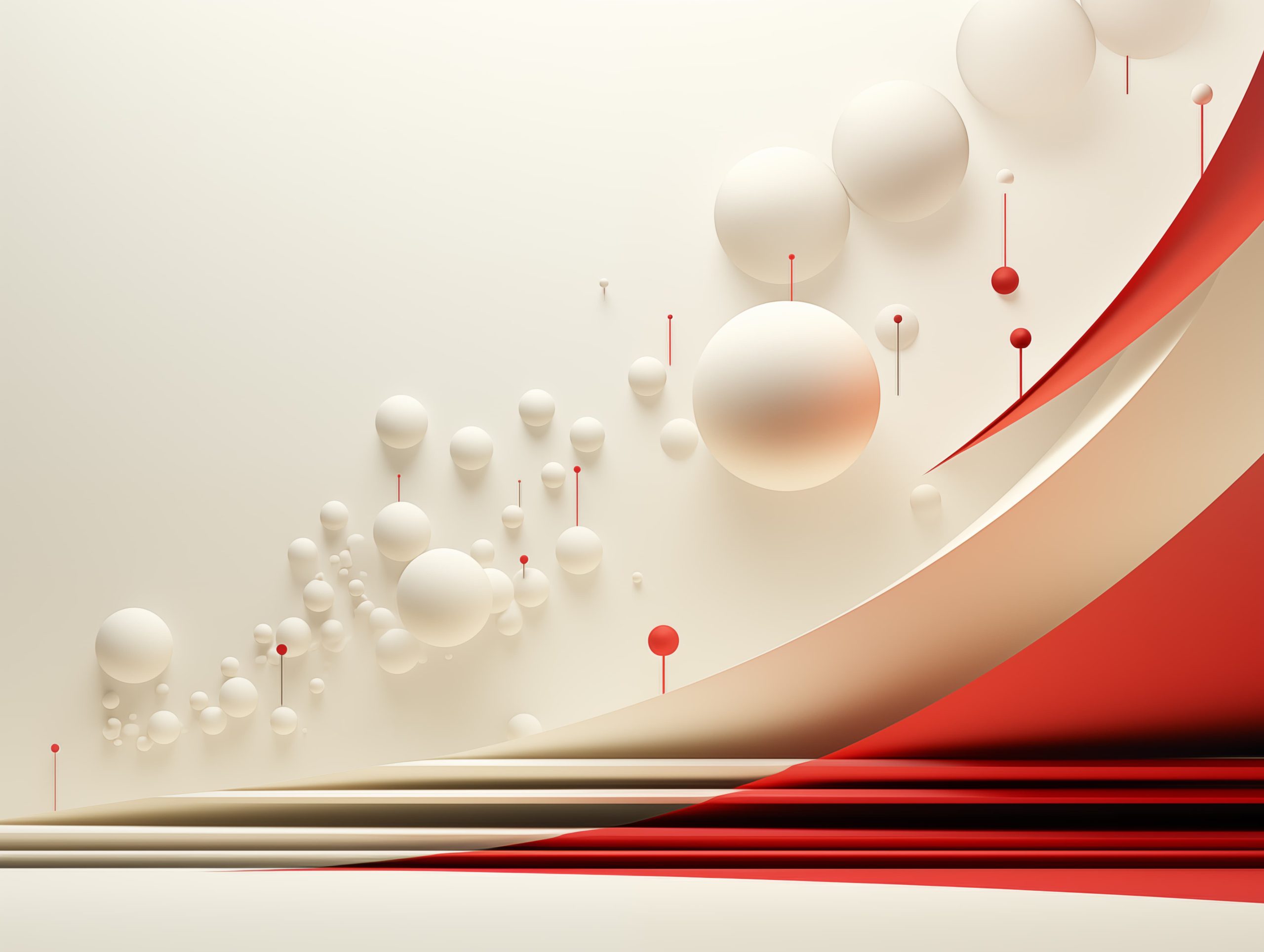Following conversation and consternation around Instagram’s new policies with regard to AI and artists’ work on the platform, a wave of creators are heading to creative-focused social media platform Cara. This shift comes in the wake of Meta’s recent decision to use Instagram posts to train its generative AI tools, a move that has led to significant discomfort and a migration of creatives to lesser-known platforms like Cara.
Cara bills itself as a social networking app for creatives, where users can share images of their artwork, as well as memes and text-based thoughts. The app draws parallels with popular social platforms like X (formerly Twitter) and Instagram but aims to distinguish itself by offering robust protections against the unauthorized use of artist content by AI systems. Users access Cara through both mobile and browser-based platforms, enjoying a free user experience that combines familiar elements of established social media interfaces with unique features tailored to artists.
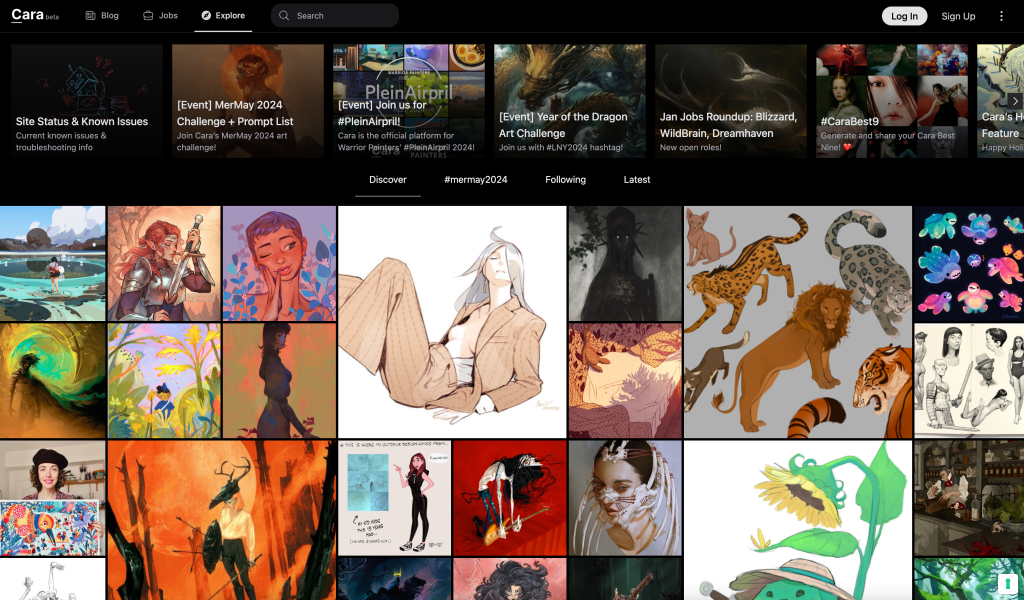
The user interface of Cara is described as an arts-centric blend of X and Instagram. It features a main page that toggles between “Home” and “Following” feeds, which display scrollable posts with functionalities for comments, reposts, likes, bookmarks, and links—mirroring the interaction icons found on X. Additionally, a colorful search page reminiscent of Instagram’s Explore page showcases artwork in a grid format, emphasizing the app’s visual focus.
Cara’s distinctive features include customizable home feeds, where users decide the proportion of posts they see from their direct connections versus the broader network. The app also separates professional content from casual or fandom-related posts, allowing different types of interactions to coexist seamlessly. A significant addition is a LinkedIn-esque job tab, which connects artists with potential employers in fields like game design, VFX, and animation.
The impetus for the migration to Cara has been fueled by Meta’s controversial use of artists’ Instagram content to train AI without clear consent mechanisms, especially outside of the European Union where opting out remains confusing and limited. This practice has led to widespread dissatisfaction among artists, particularly those who depend on Instagram for revenue, forcing them to choose between risking their intellectual property or losing a vital income source.
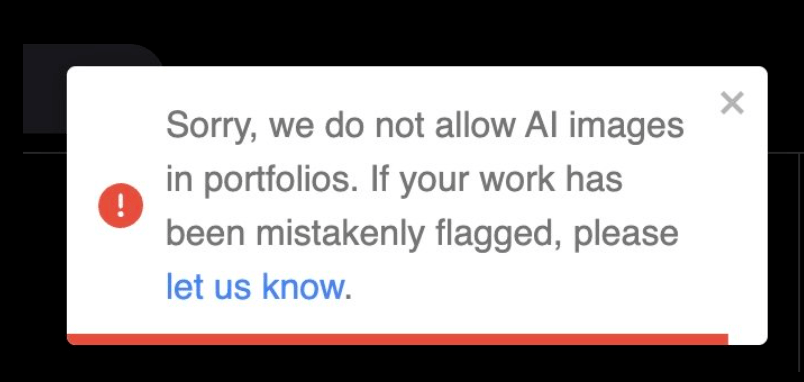
To protect its community, Cara has implemented several strategies. It explicitly forbids AI models from training on its content and does not allow third-party access to user data for such purposes. The “NoAI” tags added to all posts on Cara are designed to deter AI scrapers, although Cara acknowledges that these tags are not a foolproof solution and do not carry legal weight. They represent a first step towards establishing a safer environment for creators.
Additionally, Cara has launched Cara Glaze, a tool developed in partnership with the University of Chicago’s SAND Lab. This tool makes subtle adjustments to artworks that are imperceptible to humans but confuse AI models, making it difficult for them to replicate the artist’s style accurately. Looking ahead, Cara plans to introduce Nightshade, another tool from the same lab, which aims to “poison” AI training data to further protect artworks from unauthorized use.
Cara’s rise in popularity was meteoric, with the user base growing from a few thousand to over 300,000 in just a few days, driven by high-profile endorsements and artists’ growing discontent with Instagram. Despite being in beta and experiencing technical challenges due to the sudden surge in traffic, Cara’s development team has been actively updating the platform to handle the increased load.

It remains to be seen whether the trend will continue. While Cara offers an exciting alternative community for artists looking to steer clear of artificial intelligence, Instagram’s immense popularity and potential as a networking tool could mean that professional artists who avoid the platform risk missing out on major opportunities and exposure. Additionally, if Meta feels that it has lost enough of its creative user base on Instagram, it could revisit its new policies.



